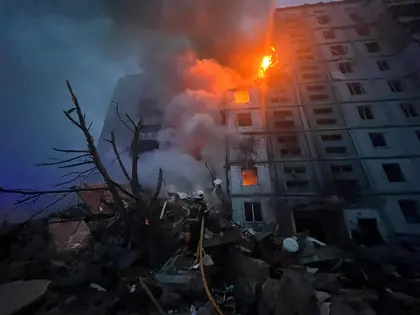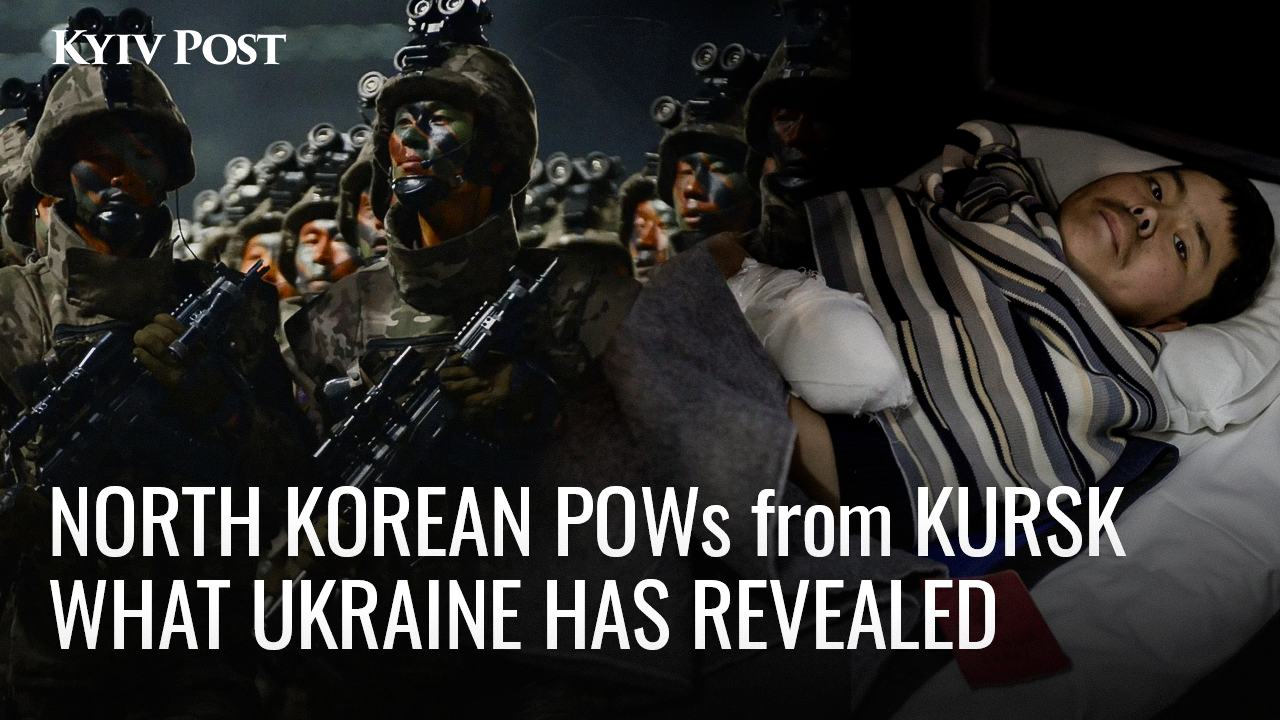Russian army strike planners employed new tactics and more sophisticated missiles in its latest, renewed long-range bombardment of Ukrainian cities and towns.
Unlike past attacks, which mostly took the form of a single massed launch during daylight hours, these recent strikes were staggered, spread over two days and at night; the overall Kremlin target appeared to attack civilians in their homes.
JOIN US ON TELEGRAM
Follow our coverage of the war on the @Kyivpost_official.
On the night of April 27, the Russians attacked Mykolaiv then, in the early hours of April 28, the country more widely. It was the first major wave of missile strikes on Ukraine and its air defenses in 50 days.
The Russian attacks did not, apparently, seem even to attempt to aim at the Ukrainian power grid or other infrastructure, the targets Russian President Vladimir Putin had vowed to annihilate in October, in order to force Ukrainians to spend the winter in cold, dark apartments.
A few hours after the attack in the early hours of Thursday morning as the civilian death toll was still rising, the Russian defense ministry said it has used long-range precision missiles to target "points of temporary deployment of reserve units of the Ukrainian armed forces", adding that "all assigned objects were hit."
The only things hit on both Thursday and Friday, according to reports from the ground, were civilian residences or apartment buildings and those people inside.
In the city of Uman, in the Cherkasy region, two Russian missiles hit residential areas, one blasting a giant hole in a nine-story apartment building. At the time of writing, at least twenty-two people, including three children, are known to have died and rescue workers fear that more victims will be found in the rubble.

Trump Makes 90 Day Foreign Aid Freeze – Ukraine Military Support Supposedly Untouched
Uman is a provincial city, with little heavy industry, which had never been the target of a major missile strike in over more than a year of war. It is best known as the home to the founder of the Breslov Hasidic branch of Judasim and has become a pilgrimage site for the faithful. City officials announced have announced a three-day mourning period.
As in past attacks, the majority of the Russian assault was from aircraft-launched cruise missiles: On April 28, at 4 a.m., four Russian Federation (RF) Tu-95 bombers flying over the Caspian Sea, far beyond the Ukrainian air defense network, fired 23 X-101 or X-555 missiles.
Both types of cruise missile are late-model weapons claimed by the Kremlin to be capable of flying indirect routes to avoid air defenses and equipped with sophisticated sensors that allow them to stay low to the ground out of radar coverage.
Eleven cruise missiles aimed at Kyiv were knocked down, and none hit the capital, whose air space is heavily defended by multiple batteries of anti-aircraft cannon and missiles.
Nationwide, a total of 21 Russian missiles were intercepted, Ukrainian officials said, but one got through to the major industrial city of Dnipro, killing a woman and a child, in a location which, according to local news reports, was nowhere near any military targets.
In the city of Ukrainka, downstream along the Dnipro River about 60 km. from the capital, missile fragments hit a high-rise building, injuring another child.
In past attacks, Russian strike planners trying to force missiles deep into Ukrainian air space, have routed weapons along river valleys to keep their weapons low to the ground, to keep them off Ukrainian radar and outside of the view of Ukrainian air wardens.
The Russian tactic has placed localities, on the edge of an air defense network around major cities or near rivers, in the danger zone for falling debris from a successful shootdown - and Ukrainka is both. It was not immediately clear what caused the damage in Ukrainka, but officials had not ruled out falling debris from a missile interception.
Ukrainian air force spokesman, Yury Ihnat, said during Thursday’s attack on Mykolaiv, the Kremlin had stepped away from its past practice of firing ship-launched Kalibr cruise missiles or S-300 anti-aircraft missiles, reconfigured as a bombardment weapon, and instead launched ballistic Iksander-K surface-to-surface missiles.
The Iksander-K - a weapon designed to be used against point targets such as an airfield or a headquarters - is nearly impossible to intercept, Ignat said. Local news reports noted that more than 23 people were injured and one Mykolaiv resident died.
"This missile flies very low, which gives us a problem to detect it and shoot it down. But such missiles were shot down by our anti-aircraft defenses this time,” Ignat said in a television interview.
The new round of Russian strikes, focusing ever more on civilian targets and trying to exploit gaps in Ukraine’s air defense network, triggered a renewed round of Kyiv appeals to western nations to provide Ukraine with interceptor aircraft, in particular the US-made F-16 fighter.
“It is impossible to stop the Russian missile assault with passive defenses. The only way to protect Ukrainian lives against continued Kremlin assault, is to give Ukraine’s military the tools to shoot down the Russian bombers, attack their warships and drones which are now specifically targeting Ukraine’s civilian population,” Foreign Minister Dmitro Kuleba argued.
"Missile strikes that kill innocent Ukrainians in their sleep, including a 2-year-old child, are Russia's response to all talk of peace initiatives. The way to peace is to expel Russia from Ukraine. The way to peace is to arm Ukraine with F-16s and protect children from Russian terror," said Kuleba in a statement made on Friday April 28.
You can also highlight the text and press Ctrl + Enter













